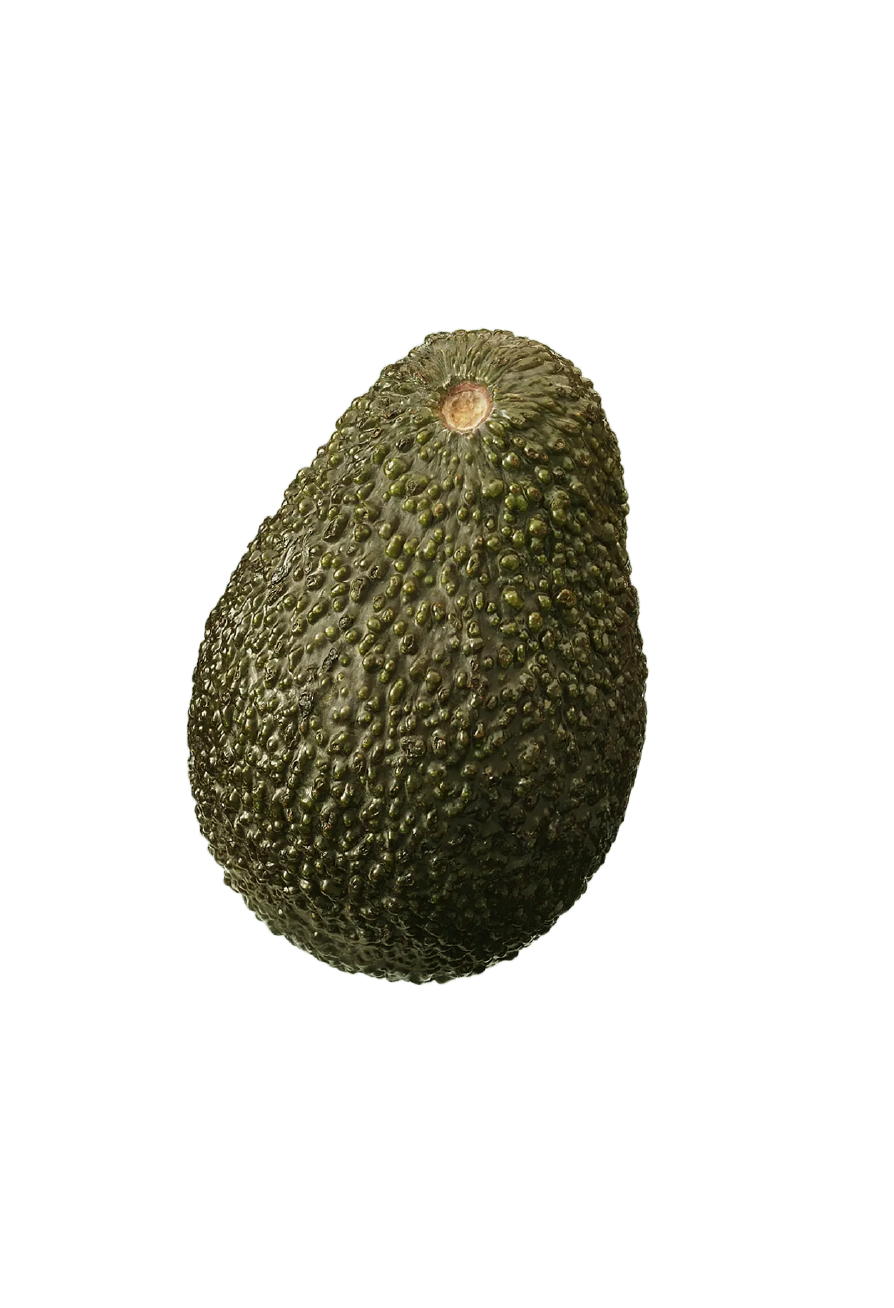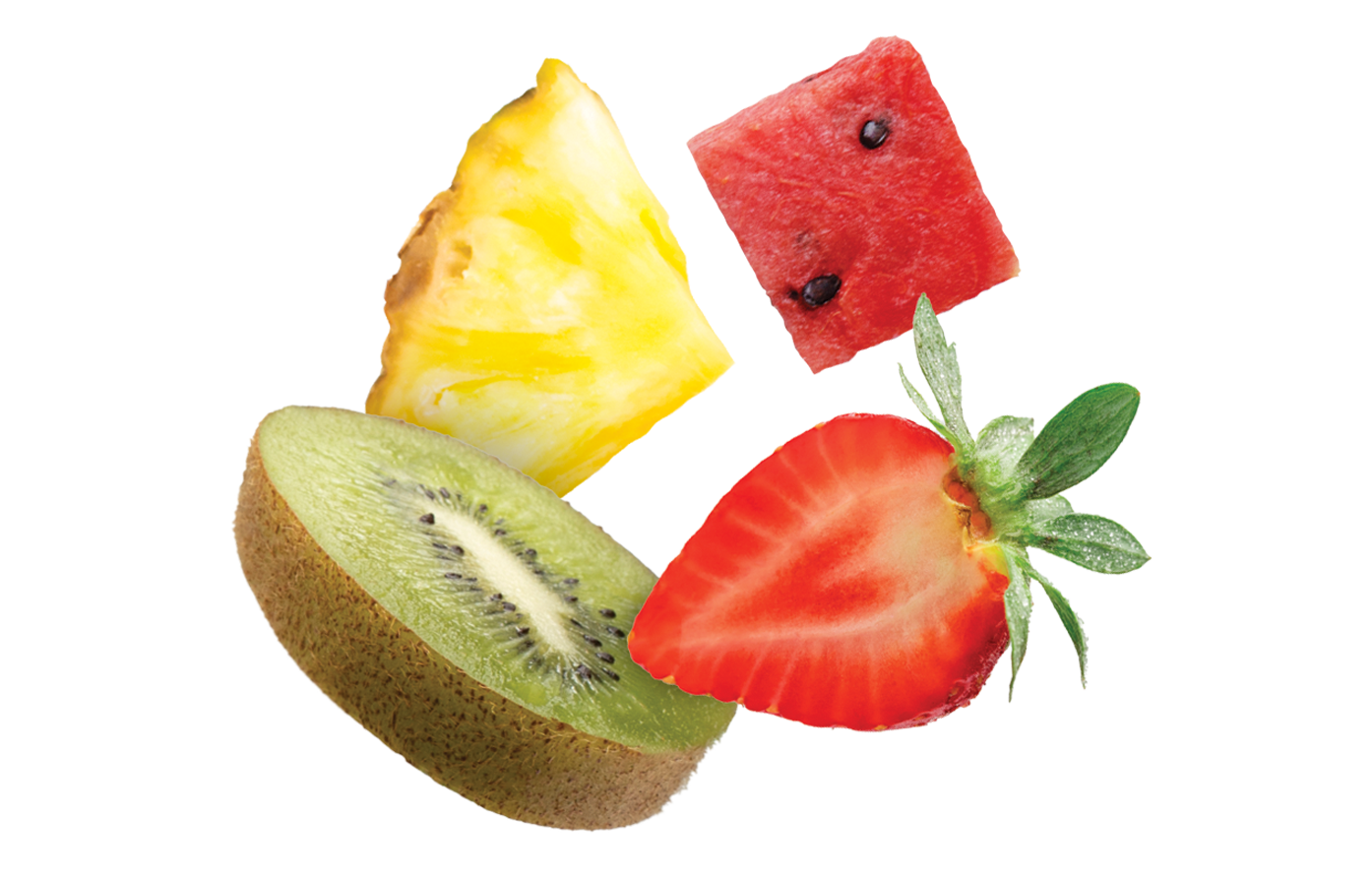FAQs
Browse our frequently asked questions below.
It’s Fresh is based in the UK (Staffordshire), with RYPEN commercial teams located in South Africa, Europe, USA and South America. Together with the global manufacturing partners of It’s Fresh we’re able to work with growers, exporters and retailers around the world.
All vegetation produce and emit ethylene – a natural plant hormone; which reacts and binds with ethylene receptors within plant cells. In the case of fruits and vegetables, when this binding occurs the ethylene receptors will trigger numerous biochemical pathways associated with ripening – accelerating this process with increased exposure. This results in fresh produce developing flavour, taste, aroma, colour and texture; too much though leads to over-ripening and spoilage. As fruits and vegetables mature or become stressed, they produce and emit an increasing amount of ethylene. This results in higher ethylene concentrations which further increases the ethylene receptor binding rate. This issue is further compounded, because even if just one item of fresh produce is emitting ethylene, this will initiate ripening within and amongst surrounding fresh produce. Therefore, ethylene’s impact on fruits and vegetables heightens the riper they become eventually leading to rotting and spoilage (Chang, 2016).
Chang, C. (2016). Q&A: How do plants respond to ethylene and what is its importance? BMC Biology, [online] 14(1). doi:https://doi.org/10.1186/s12915-016-0230-0.
RYPEN is owned by It’s Fresh Ltd, a UK-based agrifood tech company. The company is focused on developing solutions for post-harvest ethylene management, supporting growers, packers, exporters and retailers to deliver and sell more of the produce they grow, in better condition for consumers, while minimising food losses and waste.
Unmanaged ethylene accumulates during storage, transit even within retail packs. This causes accelerated ripening and reduces shelf-life, for this reason ethylene was always seen as a problem to be eradicated. However, inhibiting ethylene receptors isn’t the answer either as this prevents the produce from fully developing – resulting in a poor eating experience for the consumer, high domestic waste and a negative impact on repeat purchase. Therefore, the key to striking the perfect balance is ethylene moderation; this provides all the benefits of natural ripening but in a controlled manner which alleviates time constraints (Tucker et al., 2017).
Tucker, G., Yin, X., Zhang, A., Wang, M., Zhu, Q., Liu, X., Xie, X., Chen, K. and Grierson, D. (2017). Ethylene and fruit softening. Food Quality and Safety, 1(4), pp.253–267. doi:https://doi.org/10.1093/fqsafe/fyx024.
Different cultivars produce varying amounts of ethylene and also have varying degrees of sensitivity to this plant hormone all the way down to the varietal level. These two aspects can diverge significantly with some low ethylene emitters being highly sensitive and vice versa (Khan, Alvi and Kan, 2024).
Khan, S., Alvi, A.F. and Khan, N.A. (2024). Role of Ethylene in the Regulation of Plant Developmental Processes. Stresses, [online] 4(1), pp.28–53. doi:https://doi.org/10.3390/stresses4010003.
All RYPEN products are food-contact approved to EU and US FDA standards, with a letter of compliance issued by Campden BRI.
When we develop RYPEN products we are able to adjust the RYPEN Technology inclusion levels to better match the needs of the produce and the length of time it will be stored, shipped, or retailed for. We already have different sizes and formats of products that are optimised for certain types of ethylene emittance levels and rates too. Discuss this with our Commercial and Technical teams and they will be able to provide further recommendations.
All RYPEN products are subject to recommended quality and batch control procedures to ensure goods are at the expected standard on supply. All are produced by approved facilities which adhere to strict guidelines relating to manufacturing practices. Certifications are available on request.
Almost all, yes. The vast majority of fresh produce we buy today is sensitive to, and produces, ethylene to varying levels. Ethylene is also produced as a response to various stress factors (i.e., temperature, handling, damage etc.). Scientific research is constantly showing that produce previously thought to be unaffected by ethylene is, in fact, responsive to it with significant improvements in quality when this is managed correctly.
RYPEN products are highly customisable from different sizes, shapes, colours, perforations, absorbency rates and more.
RYPEN has been shown to extend the window of peak ripeness across numerous crop types, enabling quality enhancing operational changes to be made – for consumers this means fresh produce is closer to the ideal and optimal eating experience. In-turn this could stimulate growth by increasing repeat purchase intent as well as bringing new consumers into the category.
RYPEN products do not require any specific handling or disposal instructions after use (check with your local authority).
It’s Fresh Limited (the RYPEN brand owner) also works with large customers to set-up a collection and recycling service whereby the RYPEN Technology can be recovered from the packaging material and reused again. If you are interested in this, please contact us directly to discuss further.
You’ll begin by talking with one of our Commercial team members who will introduce the capabilities of RYPEN and ask questions to better understand your crops, processes and destination markets. Our Technical Services team may also provide support to advise on the best RYPEN solution, and to design any relevant commercial pilot, or support on analysis of trial data.
Across numerous trials and commercial pilots, RYPEN has been shown to add resilience to fresh produce supply chains with the potential to navigate unforeseen disruption and periods of over-supply. It can also bring far away markets previously out of reach within range. This is why RYPEN brings peace of mind to growers, exporters and retailers, who can be more confident of supplying longer lasting fresh produce, in better condition, uninhibited with full natural development.
RYPEN selectively adsorbs ethylene molecules, drawing these from the air into its molecular structure, then binding and locking them within – a process far stronger than absorption alone. It has been specially designed to only capture ethylene molecules, enabling RYPEN to efficiently moderate exposure levels for long periods.
This makes RYPEN’s mode of action unique within the ethylene control market, because fresh produce protected with RYPEN doesn’t utilise chemical oxidisation of molecules or rely on biochemically altering fresh produce.
This means RYPEN protected fresh produce is safe, lasts longer with natural ripening and flavour development fully enabled. All RYPEN products are food-contact approved to EU and US FDA standards, ensuring fresh produce can be safely and effectively protected by RYPEN products at close proximity.
i) Store RYPEN products in a cool, dry place in the bags provided.
ii) Keep away from sources of ethylene.
The RYPEN Ethylene Moderating Technology is patent protected, with It’s Fresh Ltd holding various patents, global licenses and proprietary know-how related to it.
The plant hormone ethylene is integral to plant life; it has many uses including breaking of seed dormancy, flower initiation, abscission of leaves and flowers, fruit and vegetable ripening, senescence as well as a response to stresses such as wounding, chilling, flooding, UV damage and rotting pathogens (Chang, 2016).
Chang, C. (2016). Q&A: How do plants respond to ethylene and what is its importance? BMC Biology, [online] 14(1). doi:https://doi.org/10.1186/s12915-016-0230-0.
A play on the word ‘ripen’ our ethylene moderating technology (that we call RYPEN) ensures the ripening process of fruits and vegetables is naturally enabled but in a controlled, steady manner. By doing this our technology extends produce life, or the peak ripeness window, while allowing natural flavour, aroma, texture and colour profiles to fully develop.
The ideal time for fresh produce to be ripe is when it arrives in the hands of the person who’s going to eat it. Therefore, everyone involved in the fresh produce supply chain wants to delay ripening as much as they can. There are many ways to do this, some of which compromise the consumer’s eating experience. Our RYPEN Technology doesn’t compromise the eating experience, but allows everyone involved in getting the produce to the consumer to have a little bit more time to get it there safely, and in great condition.
For seamless supply-chain integration RYPEN can be customised to each produce type and Inked onto paper or co-extruded into plastic. This makes RYPEN highly adaptable, with both paper and plastic packaging materials able to carry the RYPEN ethylene moderating technology.
RYPEN commercial results have shown that rate of fresh produce ripening can be slowed in a naturally balanced way. This can therefore provide stakeholders with greater control, with fresh produce longevity increased, time constraints overcome all without negatively impacting fresh produce condition.
This benefits all stages of the fresh produce supply-chain from farmers, exporters, packers, all the way through to the retailer. All gaining the ability to potentially make quality enhancing operational changes, whilst also reducing fresh produce waste.
This could even open up the opportunity for the industry to commercialise better tasting new and heritage varieties which have previously been too difficult to manage. With greater control, pre-mature harvesting could also be reduced or completely avoided, which would enable fresh produce to develop further on the vine, bush, tree or plant.
The scientific consensus has moved forward on the question of ethylene and its effect on fresh produce. The research confirmed that ethylene triggers and speeds up the rate of ripening, whilst also providing many natural developmental benefits. RYPEN has been developed with this discovery in mind, intelligently reimagining the solution – designed to strike the perfect natural balance and address the nuances of ethylene. With RYPEN, selective ethylene adsorption seamlessly embedded into packaging materials, the rate of ripening is slowed at every step of the supply chain whilst still allowing a moderated amount of ethylene to provide its natural ripening benefits (Tucker et al., 2017).
Tucker, G., Yin, X., Zhang, A., Wang, M., Zhu, Q., Liu, X., Xie, X., Chen, K. and Grierson, D. (2017). Ethylene and fruit softening. Food Quality and Safety, 1(4), pp.253–267. doi:https://doi.org/10.1093/fqsafe/fyx024.
RYPEN moderates ethylene concentration levels in the air and thereby reducing the ethylene receptor binding rate of fruits, vegetables and flowers. This means the ideal natural ripening abilities of fresh produce are fully enabled and uninhibited, with this process simply slowed down for extended produce life. This way fresh produce can fully develop flavour, aroma, texture and other natural volatiles, delivering the optimal eating experience for longer. RYPEN is seamlessly embedded within plastic packaging or inked onto paper packaging. This adaptability allows our products to become multi-functional, protecting produce at close proximity.
Please share your details (via the Contact us page), and we’d be very happy to discuss relevant trial results with you.
The RYPEN products (Leaf, Pad and Case liner) can be purchased from us directly. We also have licenced partners and distributors in South Africa and Chile, specifically for the Case liner, to allow customisation of perforation and ventilation. Share your details via the contact us page and we will reply to your enquiry with any details requested including next steps.
We’ve run many successful trials across multiple crop types, grown in various regions and shipped to multiple destinations. We’ve also conducted static trials with independent research institutes and universities globally too. If you’re interested in running a trial with RYPEN specifically, share your details via the Contact us page, and we’ll get in touch to discuss.
Great, we’d be very happy to talk to you! Our core technology is available as a masterbatch or blown film for incorporation in finished packaging products (RYPEN Case Liner and RYPEN Pad; however, our RYPEN Ink (used on paper packaging products) is not currently available for external manufacturing, although this will change in the future.
It may also be possible as part of the licensing agreement to work with us to develop new RYPEN packaging products and we will support you to do this.
Please get in contact with us to discuss further.
Firstly, it’s important to distinguish between food ‘waste’ and food ‘losses’. Food ‘losses’ – when considering the fresh produce industry – occur between post-harvest (i.e., picking) right up to retail. Therefore, if produce goes bad during transport to the destination market – for example, due to port delays, or the ship having to sail a longer distance, both scenarios that are increasingly common today – this is considered a food ‘loss’.
Food ‘waste’ however relates to retail, foodservice and the consumer. So, if cucumbers are rejected by a supermarket for being wonky, or a consumer throws out a punnet of raspberries because they’ve spoiled at home, this is all considered food ‘waste’.
Food loss and waste together (and not just fresh produce) accounts for up to 10% of total annual global greenhouse gas (GHG) emissions (UN Environment Programme, 2021). This puts it third on the list of biggest ‘emitters’, after China and the US (European commission, 2023). As a result, the emissions ’embedded’ in food that is never eaten is hugely significant, and plays a major role in anthropogenic (human-induced) climate change.
UN Environment Programme (2021). UNEP Food Waste Index Report 2021. [online] UNEP – UN Environment Programme. Available at: https://www.unep.org/resources/report/unep-food-waste-index-report-2021.
European Commission (2023). EDGAR – The Emissions Database for Global Atmospheric Research. [online] edgar.jrc.ec.europa.eu. Available at: https://edgar.jrc.ec.europa.eu/report_2023.
Functional packaging comes in many different forms, and can be made from many different materials – it serves the purpose of keeping fresh produce free from contamination, protecting it from mechanical damage, and reducing dehydration. It can also help the produce look more appealing, make it easier to handle, and give space to share important information for the consumer.
A leading sustainability body, found that cucumbers in plastic packaging had wastage levels 50% lower than unwrapped cucumbers – when considering all the resources from growing, packing, shipping and retailing that cucumber, the wrapped one had much lower embedded CO2 emissions than the unwrapped one, even with the packaging factored in (Denkstatt, 2020). This illustrates the important role that packaging, and not just plastic packaging, plays in certain situations – fresh produce, especially given its short life and propensity to dehydrate, is one category where packaging is absolutely critical to preserving the life and reducing the potential for food waste.
Source: Denkstatt, 2020: Food packaging sustainability
Whilst reducing single-use plastic is an important global topic, food waste is actually the third largest single contributor to anthropogenic (human-induced) climate change. In parts of the world like the UK, the EU and North America, almost half of all the fresh produce waste occurs at retail and consumer levels. Here, small amounts of packaging can make a big difference to extending the shelf-life, and therefore helping to reduce food waste.
Using cucumbers as an example, removing the wrap in retail settings can drive wastage levels by circa 50%. When considering the embedded resources in that wastage, the small amount of wrap actually provides a net positive in terms of CO2 emissions (Ecoplus, BOKI, Denkstatt, OFI., 2020) by ensuring more of the produce is consumed. The other unfortunate reality of food waste is that the contents and the packaging both get disposed of together – it’s not feasible to separate the two, and compost the food while recycling the packaging. As a result, a small amount of packaging – especially that with the RYPEN Technology embedded in it – can make a big difference to shelf-life, and therefore a big difference in helping reduce the impact of food waste on our climate.
Ecoplus, BOKU, Denkstatt, OFI (2020): Food Packaging Sustainability: A guide for packaging manufacturers, food processors, retailers, political institutions & NGOs. Based on the results of the research project “STOP waste – SAVE food”. Vienna, February 2020
Up to 50% of all fruits, vegetables and root crops grown globally are never consumed (UN FAO, 2015). When food wastage occurs all the resources that were used to produce that food – including water, land, energy, labour and capital – also go to waste. This has a cascading effect, increasing instances of drought, deforestation, food insecurity and emissions (UN FAO, 2019). To address the challenge of food wastage, refrigeration through supply chains and the management of ethylene are critical. With both of these practices, more of what is grown can arrive in the hands of consumers, reducing pressure on food production resources globally.
UN FAO, (2015). Global initiative on food loss and waste reduction. [online] Food and Agriculture Organization of the United Nations, p.2. Available at: https://openknowledge.fao.org/server/api/core/bitstreams/57f76ed9-6f19-4872-98b4-6e1c3e796213/content [Accessed 1 Nov. 2024].
UN FAO, (2019). SOFA 2019 – The State of Food and Agriculture in the World. [online] Available at: https://www.fao.org/interactive/state-of-food-agriculture/2019/en/.


















